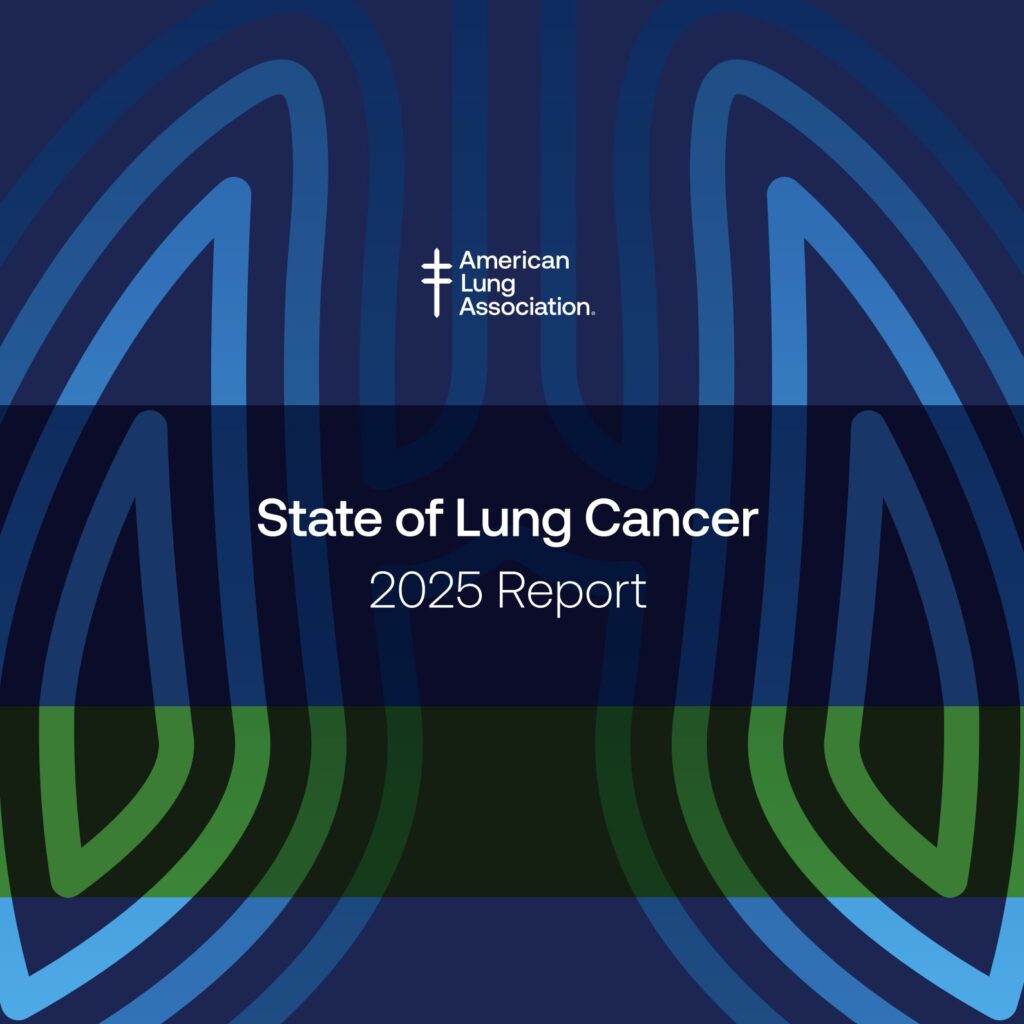The American Lung Association in Kentucky released the 2025 “State of Lung Cancer” report, which reveals that more needs to be done to end the burden of this devastating disease throughout the state.
Lung cancer remains the leading cause of cancer deaths both in Kentucky and nationwide. The report finds that Kentucky has the highest rate of new lung cancer cases and the second-highest adult smoking rate in the country, just behind West Virginia, which ranks worst.
While Kentucky remains among the worst for five-year survival, the report highlights encouraging progress. Facing these challenges, Kentucky is responding with above-average screening, gains in early diagnosis, survival and a comprehensive biomarker testing law that enhances personalized care.
Kentucky’s lung cancer incidence rate has improved by 9% over the past five years, while the five-year survival rate has increased by 32% and early diagnosis by 12%. Importantly, Kentucky performs above the national average in high-risk lung cancer screening (ranking 12 out of 51 states with 21.4% getting screened), a critical resource for early detection and improved outcomes.

“In the past five years and nationwide, we have seen significant progress, including improvement in survival and early detection rates. This means that more people in our state are living longer after a lung cancer diagnosis,” said Shannon Baker, director of advocacy for the American Lung Association. “While this progress gives us hope, our state continues to face some of the nation’s most severe lung cancer challenges. We’re encouraged by above-average screening rates, reductions in new case rates, and the passage of biomarker testing coverage legislation. These gains show that with sustained effort, more Kentuckians’ lives can be saved.”
The Lung Association’s eighth annual “State of Lung Cancer” report highlights how the toll of lung cancer varies by state and examines key indicators throughout the U.S., including new cases, survival, early diagnosis, surgical treatment, lack of treatment, screening rates and insurance coverage of comprehensive biomarker testing.
The report found that Kentucky ranks:
• 51 out of 51 in the nation for rate of new lung cancer cases, at 84.1 per 100,000, this marks a 9% improvement over past five years. The national rate is 52.8 per 100,000.
• 32 out of 39 in the nation for survival, at 25.51%, this marks a 32% improvement over past five years. The national rate of people alive five years after a lung cancer diagnosis is 29.7%.
• 33 out of 50 in the nation for early diagnosis, at 27.3%, this marks a 12% improvement over past five years. Nationally, only 28.1% of cases are diagnosed at an early stage when the survival rate is much higher.
• 12 out of 51 in the nation for lung cancer screening, at 21.4%. Lung cancer screening with annual low-dose CT scans for people at high risk can reduce the lung cancer death rate by up to 20%. Nationally, only 18.2% of people at high risk were screened.
• 26 out of 49 in the nation for surgery as first course of treatment, at 19.4%. Lung cancer can often be treated with surgery if it is diagnosed at an early stage and has not spread. Nationally, 20.7% of cases underwent surgery.
• 26 out of 49 in the nation for lack of treatment, at 20.4%, with a 36% increase in the lack of treatment rate over the past five years. Nationally, 21% of cases receive no treatment.
• 50 out of 51 in the nation for smoking, at 17.4% of adults who currently smoke, compared to the national rate of 11.4%
• 38 out of 51 in the nation for its radon test results, placing the state in the below average tier compared to other states, with a relatively high percentage of results (36.9%) equal to or worse than the EPA recommended action level.
• The report also finds that Latino Americans are 34% less likely to be diagnosed early (18.2%) compared to white individuals at 27.5%.
The “State of Lung Cancer” report also examines insurance coverage of comprehensive biomarker testing across the U.S. Lung cancer biomarker testing, sometimes referred to as tumor, molecular, genomic or genetic testing, looks for changes in the tumor’s DNA. The results of the test may show biomarkers that can help determine what treatment options would be best for an individual patient. Kentucky’s law requiring insurance coverage of biomarker testing is important for removing a cost barrier to people with lung cancer.
In addition, the report highlights opportunities for the state to reduce the burden of lung cancer through legislative action, including strengthening tobacco prevention programs to reduce the leading cause of preventable death in the U.S.
“In my ongoing commitment to addressing the burden of lung cancer in Kentucky through proven policies, this year I am sponsoring a budget request to increase funding for the state tobacco prevention and cessation program to $4M. It is a reasonable increase of $2M over current funding, and preventing kids from ever starting and helping those who want to quit using nicotine products should be a priority in our budget discussions this year,” said House Health Services Chair Kimberly Poore Moser.
The American Lung Association joins Rep. Moser, who also sponsored bills establishing the state lung cancer screening program and biomarker testing coverage, in calling on Kentucky lawmakers to increase funding for the state tobacco prevention and cessation program.
Learn more about the report and take action at Lung.org/solc.
American Lung Association





















